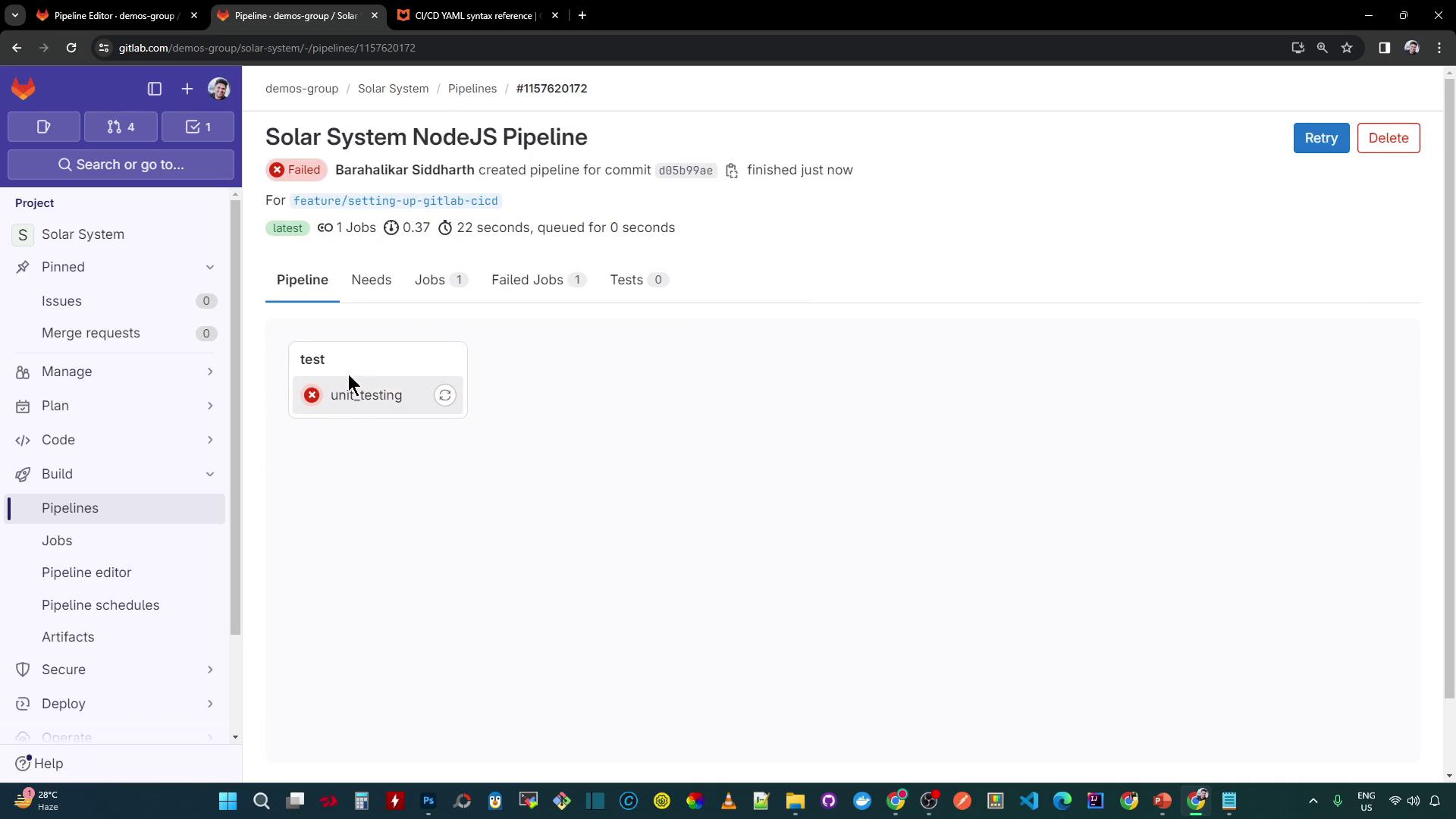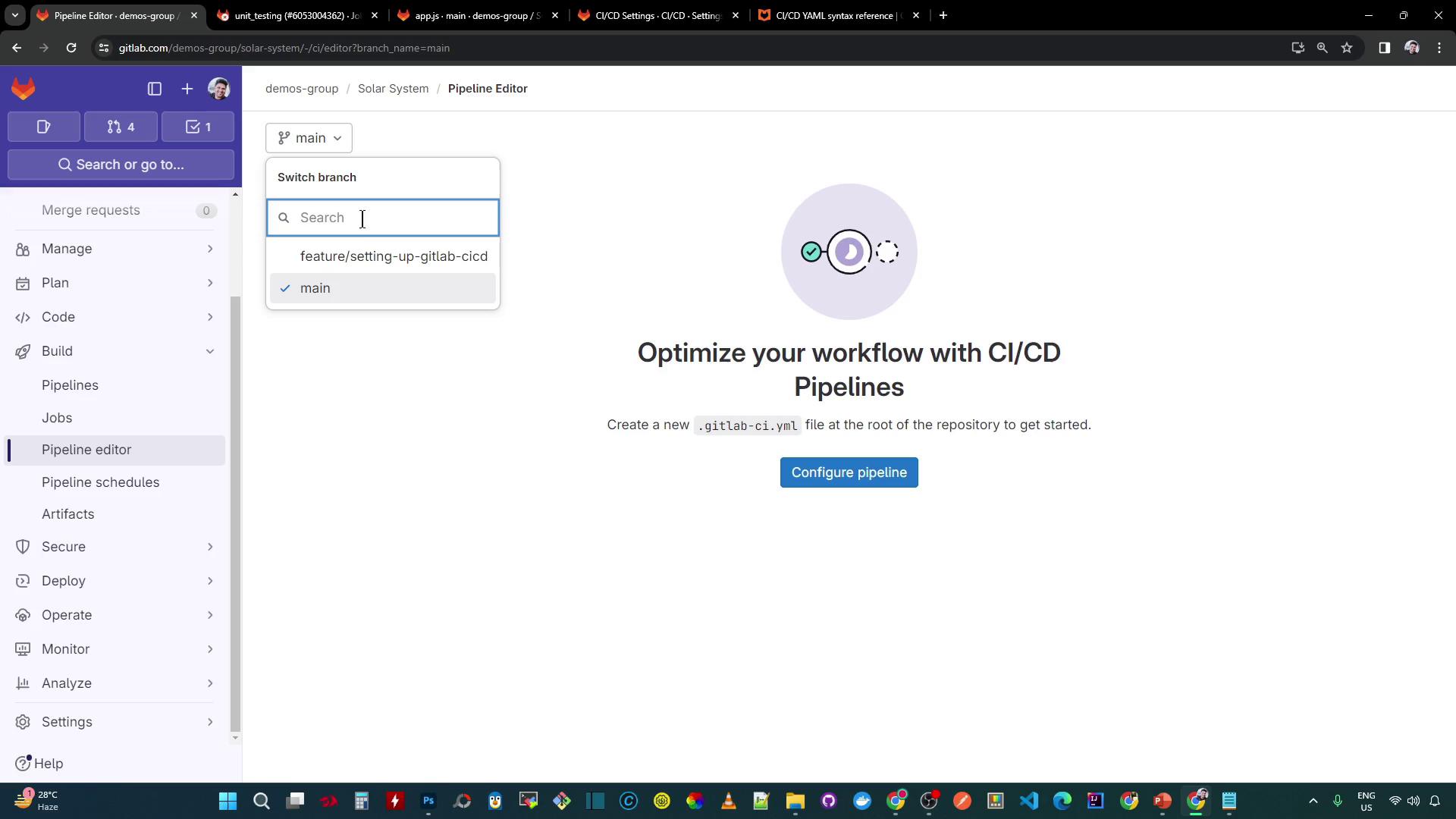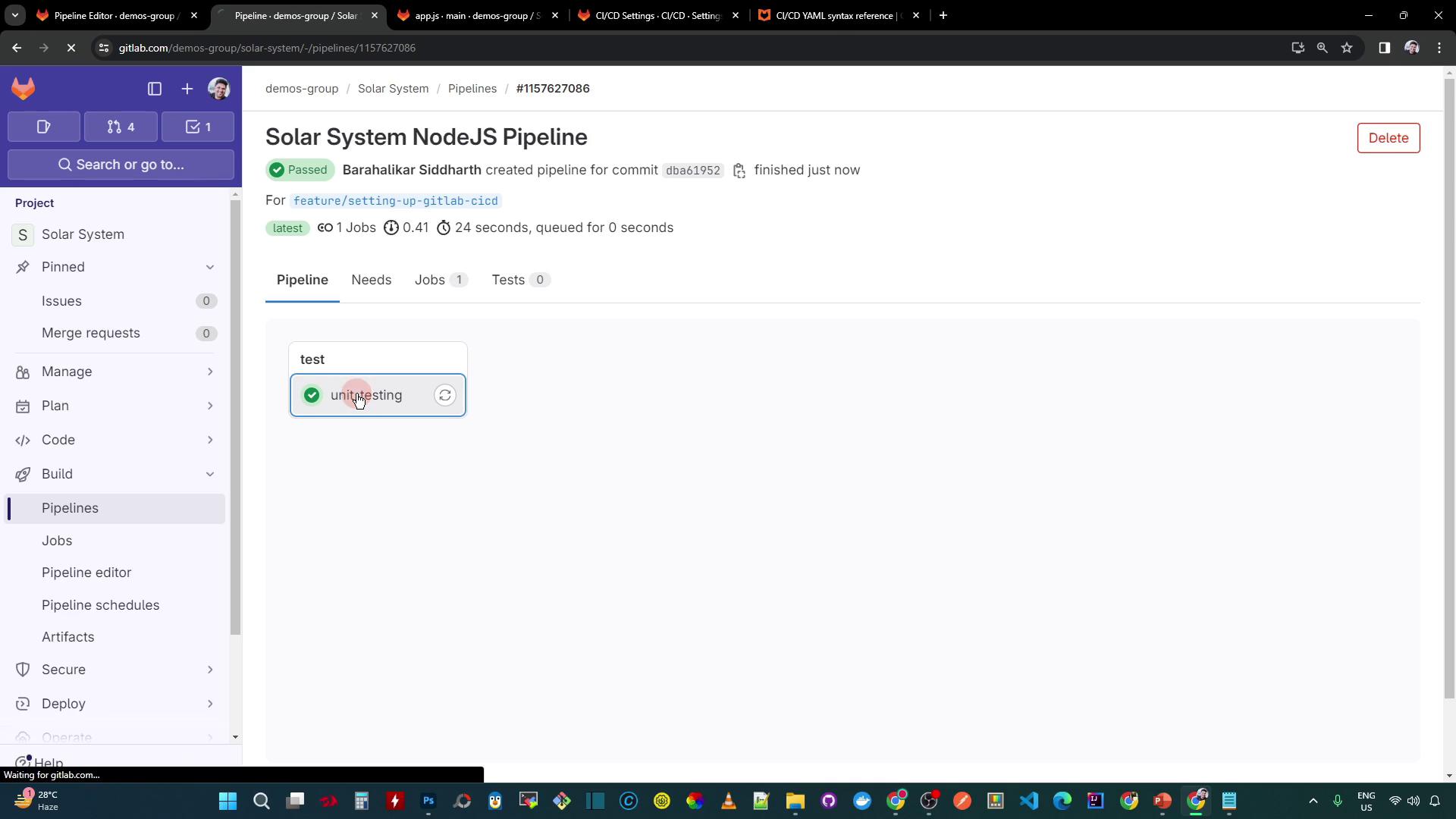GitLab CI/CD: Architecting, Deploying, and Optimizing Pipelines
Continuous Integration with GitLab
Pipeline Configure Unit Testing
In this guide, we’ll configure GitLab CI/CD for the Solar System NodeJS project and add a robust unit testing job. You’ll learn how to create a structured .gitlab-ci.yml, manage sensitive MongoDB credentials via CI/CD variables, and ensure your NodeJS tests run reliably.
1. Initialize GitLab CI/CD Configuration
Start by creating a new file named .gitlab-ci.yml at your repository root. Define the pipeline stages and add a placeholder build job:
stages:
# Define the execution order of pipeline stages
- build
- test
- deploy
build-job:
stage: build
script:
- echo "Building the project..."
Note
Explicit stages improve readability and make it easier to extend the pipeline with additional jobs.
2. Define Workflow Rules
Specify when the pipeline should trigger by adding a workflow section with conditional rules:
workflow:
name: Solar System NodeJS Pipeline
rules:
# Run on pushes to main or feature branches
- if: $CI_COMMIT_BRANCH == "main" || $CI_COMMIT_BRANCH =~ /^feature/
when: always
# Run on merge request events from feature branches
- if: $CI_MERGE_REQUEST_SOURCE_BRANCH_NAME =~ /^feature/ && $CI_PIPELINE_SOURCE == "merge_request_event"
when: always
stages:
- test
3. Add the Unit Testing Job
Next, define the unit_testing job in the test stage. This job uses the official NodeJS Docker image, installs dependencies, and runs tests with Mocha:
unit_testing:
stage: test
image: node:17-alpine3.14
before_script:
- npm install
script:
- npm test
Commit these changes to a new feature branch:
git checkout -b feature/setup-gitlab-ci
git add .gitlab-ci.yml
git commit -m "chore: add GitLab CI/CD pipeline with unit testing"
git push -u origin feature/setup-gitlab-ci
Pushing to feature/* will trigger a pipeline run.

4. Diagnose the Test Failure
Inspect the job logs. The runner pulls the NodeJS image and installs packages, but npm test fails with a Mongoose connection error. Our application code in app.js relies on environment variables:
const mongoose = require('mongoose');
mongoose.connect(process.env.MONGO_URI, {
user: process.env.MONGO_USERNAME,
pass: process.env.MONGO_PASSWORD,
useNewUrlParser: true,
useUnifiedTopology: true,
}, err => {
if (err) {
console.error("Connection error:", err);
} else {
console.log("MongoDB Connection Successful");
}
});
Without the MongoDB credentials, tests cannot connect.
5. Supply Environment Variables
Add a variables section at the top of your .gitlab-ci.yml to inject the connection details:
variables:
MONGO_URI: 'mongodb+srv://supercluster.d83jj.mongodb.net/superData'
MONGO_USERNAME: superuser
MONGO_PASSWORD: $M_DB_PASSWORD
stages:
- test
unit_testing:
stage: test
image: node:17-alpine3.14
before_script:
- npm install
script:
- npm test
Warning
Never expose plain-text passwords in your repository. Always use masked CI/CD variables for credentials.
Here’s a quick reference for these variables:
| Variable Name | Purpose | Example |
|---|---|---|
| MONGO_URI | MongoDB connection string | mongodb+srv://.../superData |
| MONGO_USERNAME | Database user name | superuser |
| MONGO_PASSWORD | Masked variable reference | $M_DB_PASSWORD |
6. Configure Masked Variables in GitLab
In your GitLab project, navigate to Settings > CI/CD > Variables. Create a new variable:
- Key:
M_DB_PASSWORD - Value: (your database password)
- Masked: ✔
- Protected: as required

Return to the Pipeline Editor on your feature branch and commit the updated .gitlab-ci.yml:

7. Verify the Successful Pipeline
A new pipeline should start automatically. This time, the unit_testing job completes successfully:

8. Review the Test Logs
The job log confirms the install and test steps:
$ npm install
added 364 packages, and audited 365 packages in 8s
44 packages are looking for funding
Run `npm fund` for details
vulnerabilities (1 high, 1 critical)
To address all issues, run:
npm audit fix
$ npm test
> Solar [email protected] test
> mocha app-test.js --timeout 10000 --reporter mocha-junit-reporter --exit
Server successfully running on port 3000
✓ should return all planets
✓ should return planet by ID
...
Now that unit tests are passing, the next step is to collect test reports using the artifacts keyword.
References
- GitLab CI/CD Documentation
- Node.js Docker Images
- Mocha Test Framework
- Environment Variables in GitLab CI/CD
Watch Video
Watch video content